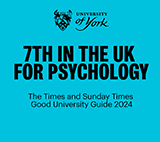
Smartphone face recognition improved by copying the brain
Posted on 31 March 2015
Combining different pictures of the user, rather than a single ‘target’ image, leads to much better recognition across all kinds of daily settings.
These are the findings of Dr David Robertson and colleagues of the University of York FaceVar lab, published in the journal PLoS One.
The researchers examined the performance of the ‘face unlock’ system on Samsung Galaxy phones. They found that the system was generally very good at rejecting imposters, but that it often failed to recognise the genuine owner too. However performance could be greatly improved, often to perfect levels, if users stored an ‘average’ of their own photos – formed by morphing together several different photos of the user.
The idea for this technique comes from studies of human face recognition. We know that the brain forms abstract representations of the faces it knows, and that people are very good at recognising their family and friends over a range of conditions. If these representations can somehow be copied, then automatic face recognition can improve. Using ‘average’ images, is a simple way to do this.
‘We chose to study the Samsung Galaxy because it is a very popular phone which comes with working face recognition technology’, said Dr Robertson. ‘However, we expect this technique to work across a wide range of phones and other automated recognition devices. It is very interesting that performance can be so much improved by copying a simple trick performed by the brain.’
